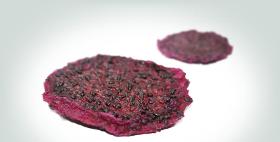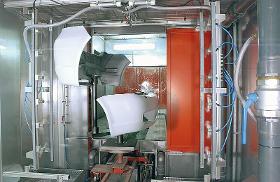- europages
- >
- COMPANIES - SUPPLIERS - SERVICE PROVIDERS
- >
- transport by air
Results for
Transport by air - Import export

HORST WALBERG TROCKENFRUCHT IMPORT GMBH
Germany
Productinformation The dragonfruit, also called pitaya or pitahaya, originated from the South American forest cactus (hy-locereus monacanthus). Pitayas can either be red or yellow. The red pitaya has white fruit pulp with many small black pits. After harvest, the pitayas are dried in slices. A total of 90 kilos of fresh fruit are required for the production of 1 kilo of dried dragonfruit slices. The taste is reminiscent of kiwis; it is sweet but complemented by a hint of dried figs. Origin Dragonfruit are pressure-sensitive and therefore easily damaged during transport. Thailand exports this fruit by air the entire year around. Nicaragua, China, Vietnam and Israel also grow dragonfruit.
Request for a quote
EBINGER KATALYSATORSERVICE GMBH & CO. KG
Germany
Moreover, in Europe we can always offer transportation of the catalysts from the client to our plant and back after regeneration. Since the founding of our company, we have been working with a partner who has extensive experience in dealing with the often sensitive goods. Transportation is always undertaken by using air-suspended vehicles and skilled personnel. We also have experience with sea transports. For example, the logistical processing for the regeneration of catalysts from the Finnish Meri-Pori (200 m³) did not cause any problems and was carried out on schedule during a three-week shutdown.
Request for a quote
RIPPERT ANLAGENTECHNIK GMBH & CO. KG
Germany
The majority of plastics used today are very susceptible to the formation of electrostatic charges on the surface. The result of this is that the surfaces are strongly attractive to particles floating in the surrounding air. These adhering particles must be removed before painting. Dirt is difficult to remove from three-dimensional or structured surfaces using conventional methods. Components such as goods carriers, which are used continuously in circulating operation, are usually also difficult to clean on account of their geometry. The dynamic ionisation station has been developed especially for these applications. The goods carriers with the three-dimensional workpieces usually pass through the ionisation station standing on, or suspended from conveyor systems. Ionisation electrodes installed in the inlet and outlet generate positively and negatively charged ions, which are transported by the flow of air to the plastic surfaces. The static surface charges are neutralised as a result. The rotary cleaning nozzles located in-between remove adhering particles from the surfaces of the workpieces using cleaned compressed air. Dust and material particles are blown away by a pulsating air flow from different directions due to the rotation of the nozzles. This highly effective method enables even dirt on shaped parts to be cleaned off reliably. The particles cleaned off in this station are fed to a filtered extraction device by targeted air guidance.
Request for a quoteDo you sell or make similar products?
Sign up to europages and have your products listed
Results for
Transport by air - Import exportNumber of results
3 ProductsCountries
Category